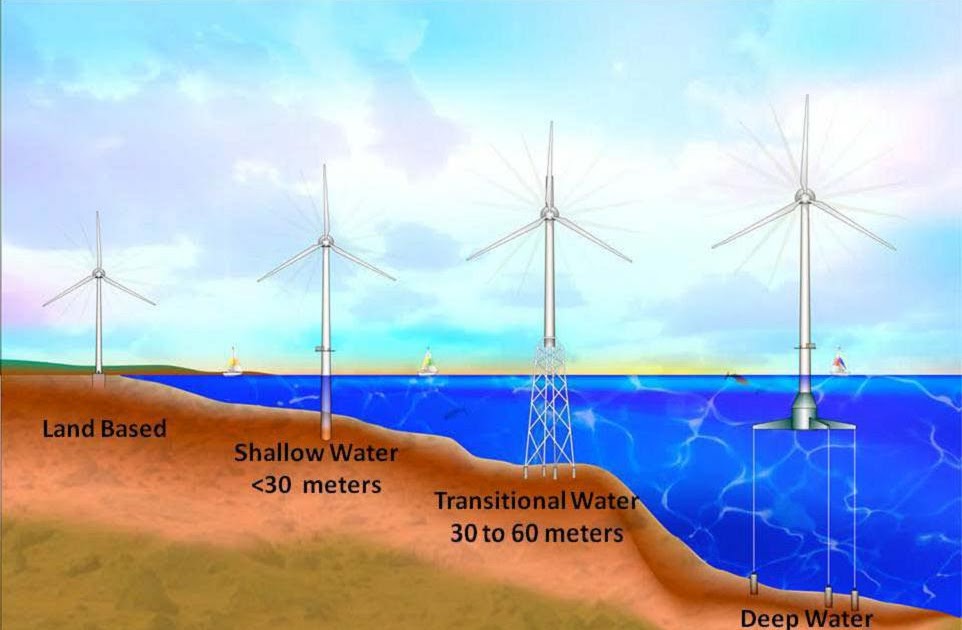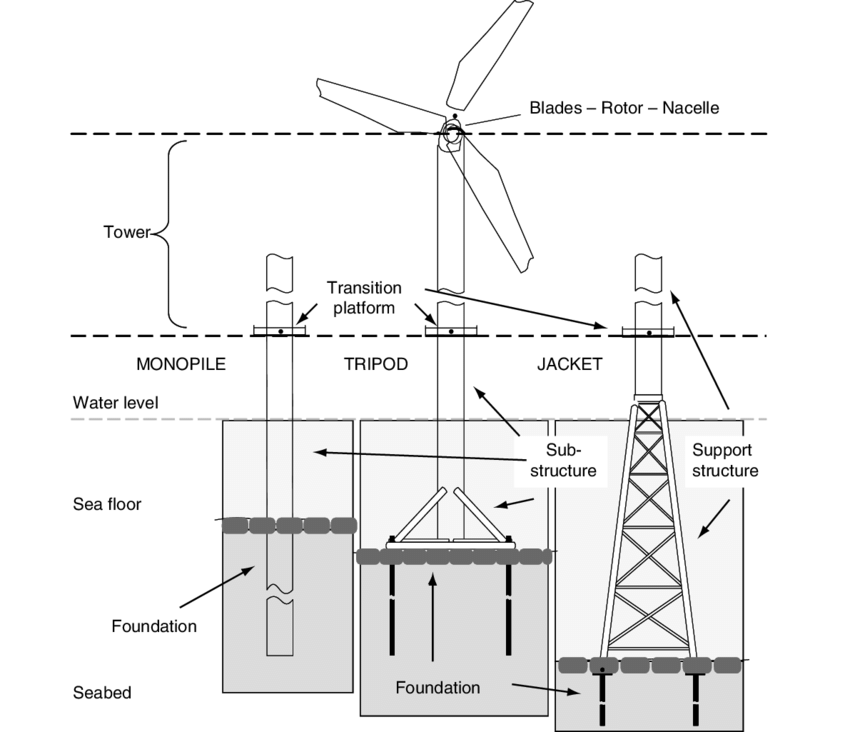Introduction
Figure 1: Overview of the Offshore wind turbines.
The Offshore wind turbines are one of the highly developing and demanding infrastructures in this current scenario. They are usually deployed in bodies of water. As compared to the onshore turbines, they are proven to be more efficient and methodical. As there is a hike in the world’s population, the demand for the need for electricity also escalates day by day. Off the coast the wind is much stronger and especially during afternoons and evenings the breezes are even stronger and matches with the usage of the people as at this particular point of time the consumption is more. Wind power is one of the fastest sources of renewable energy and they convert the ocean’s vast wind into 100% renewable electricity. As they are situated far away from land they cause no trouble for human activities and require less space than average power stations. When contrasted with the onshore turbines, they are shown to be more productive and calculated. They are a great initiation for developed and developing countries as they provide a steady and reliable supply of electricity.
Figure 2: Components of the Offshore wind turbine.
Ontology Model of an Offshore Wind Turbine
What is the purpose? The ontology model is for the conceptual design of an Offshore wind turbine, showcasing its structural design inputs and considerations of the substructure and some parts of the superstructure.
What is the scope? The ontology includes conceptualizations in particular its domain, design inputs, substructure types, materials, failures and loads and their relations.
Who are the intended users? The intended users are the designers and the engineers who are involved in the design of offshore wind turbines from the start to the end of the project.
What is the intended use? The ontology is intended to be used as knowledge representation for the basic conceptual design of Offshore wind turbines. It also highlights the structural design and can be used for further for the purpose of studies, research or analysis and to share the knowledge.
Figure 3: Ontology Model for Offshore wind turbine.
Parametric Model of an Offshore Wind Turbine
The script developed in dynamo,of the parametric model, is divided into four different groups or categories. They are the input values of the model that can be varied by number sliders, the geometry of the components and their calculations, the calculations of the High-Performance Criteria and the HPC results. The fundamental aim of the parametric model is to design the engineering structure and comprehend the interdependencies of its boundaries or parameters and high-performance criteria. At the point when done cautiously a parametrization can assist finding with great planning arrangements of a designing item. The primary challenge in creating parametric models is the determination of boundaries or parameters and high-performance criteria (HPC).
The HPCs considered shows that it affects the performance of the system as a whole. When the power of the system increases, the workability and the performance also increases. Therefore, the power generated will be high.
Reference
DESIGN AND ANALYSIS OF 2-MW WIND TURBINE TOWER, UMESH K N et.al, BHARATH P et.al.
BWEA 2003 Proposed offshore windfarm locations. Map. London: British Wind Energy Association. (Available at http://www.offshorewindfarms.co.uk/sites.html.)
Border Wind Limited 1998 Offshore wind energy: building a new industry for Britain. A report prepared for Greenpeace. London: British Wind Energy Association. (Available at http://www.offshorewindfarms.co.uk/reports/gpbw.pdf.)
References Achmus et.al, M. Kuo et.al, Y.SAbdel-Rahman et.al., 2009. Behavior of monopile foundations under cyclic lateral load. J. Comput, Geotechnol. 36, 725–735.
Wind Turbine Design, Performance, And Economic Analysis, James H. Sexton et.al


